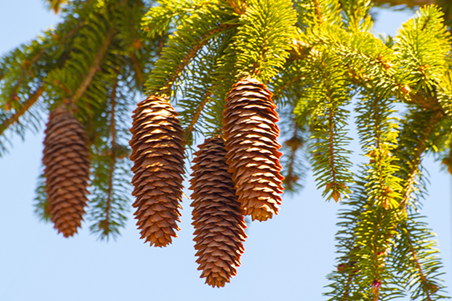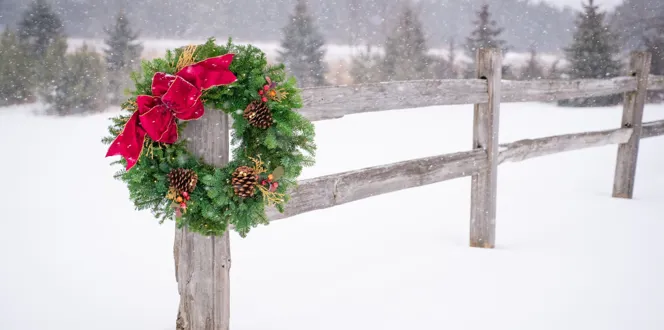At a glance, many evergreen trees look pretty similar. Even if you take a closer peek, you may not know exactly what you’re looking for. How can you distinguish one evergreen tree from another?
Let’s answer that question for three common evergreens: spruce, fir and pine. A few subtle differences set these trees apart, like the shape of their needles or the texture of their cones.
Keep reading for tips on identifying these three evergreen trees.
How to Identify a Fir Tree
Fir trees are widely considered the most common evergreen to use as a Christmas tree. But that’s not all they’re known for! Check out the characteristics of a fir tree below.
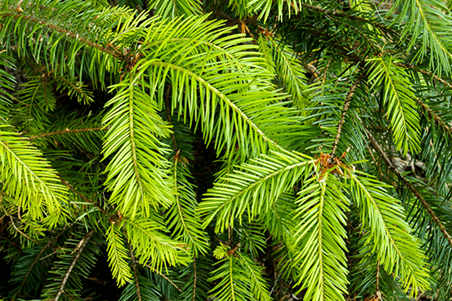
Fir Tree Identification by Needles
Fir needles grow individually from the tree’s branches, unlike pine needles which grow in clusters. In addition, fir tree needles have these defining qualities:
- Shape: Fir tree needles are flat, almost as if they’ve been squished. The tip of the needle is round, not sharp.
 Texture: Fir needles are soft and easy to bend.
Texture: Fir needles are soft and easy to bend.
Fir Tree Cones Identification
What truly sets fir trees apart is their cones. They grow upward, which is different from pine and spruce cones which droop toward the ground. Plus, fir tree cones can take on a variety of colors, like green, blue or purple, before turning brown.
Common Types of Fir Trees
- Noble fir
- Balsam Fir
- Grand fir
- Fraser Fir
- Douglas fir
How to Identify a Spruce Tree
There are approximately 40 species of spruce trees around the world, each with the attributes below.
Spruce Tree Identification by Needles
Like fir trees, spruce tree needles grow individually from tree branches. But unlike fir trees, spruce trees have a tiny bump between the branch and the needle called the sterigmata. That’s where the needle actually grows from. Here’s more on spruce needles:
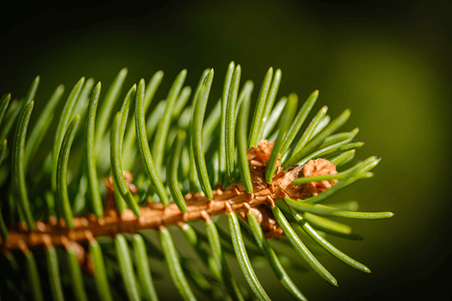
- Shape: Spruce tree needles are almost square-shaped, with distinct sides you can feel when you roll a needle in between your fingers. Their tips are pointy and sharp.
 Texture: Two words—stiff and smooth.
Texture: Two words—stiff and smooth.
Spruce Tree Cones Identification
Spruce tree cones hang toward the ground, and they have thin scales that make them smoother to the touch than pine cones. They’re also pretty flexible. You can slightly bend a spruce tree cone, but not a pine cone.
Common Types of Spruce Trees
- Colorado spruce
- Norway spruce
- Black spruce
- Alberta Spruce
- White spruce
How to Identify a Pine Tree
Pine trees are well known for their fragrant, decorative cones. Below are more facts that differentiate these trees.
Pine Tree Identification by Needles
Pine trees are not like their spruce and fir cousins in that their needles grow in clusters, rather than individually from a branch. A pine needle cluster can be anywhere from 2 to 5 needles. Here’s more on pine needles:
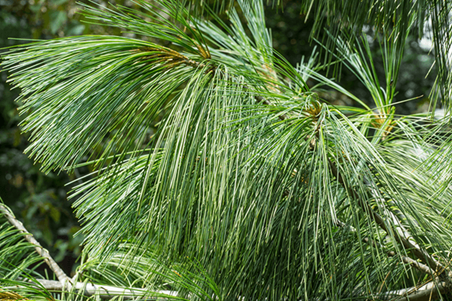
- Shape: Pine tree needles are long and narrow. They’re somewhat flat on one side.
 Texture: Pine needles are smooth to the touch and flexible.
Texture: Pine needles are smooth to the touch and flexible.
Pine Tree Cones Identification
Pine cone scales are stiff and rough to the touch. Unlike spruce tree cones, pine cones cannot be bent.
Common Types of Pine Trees
- Eastern white pine
- Bristlecone pine
- Sugar pine
- Scots pine
- Loblolly pine



